I was a robot for Halloween. Danica and I joined a few friends at the Muse nightclub for Strange Things, a fantastic dance/costume party hosted by Flip Phone. I even got dragged up on stage for the costume contest which I had no chance of winning due to the large number of amazing drag queens. We had a delightful time.
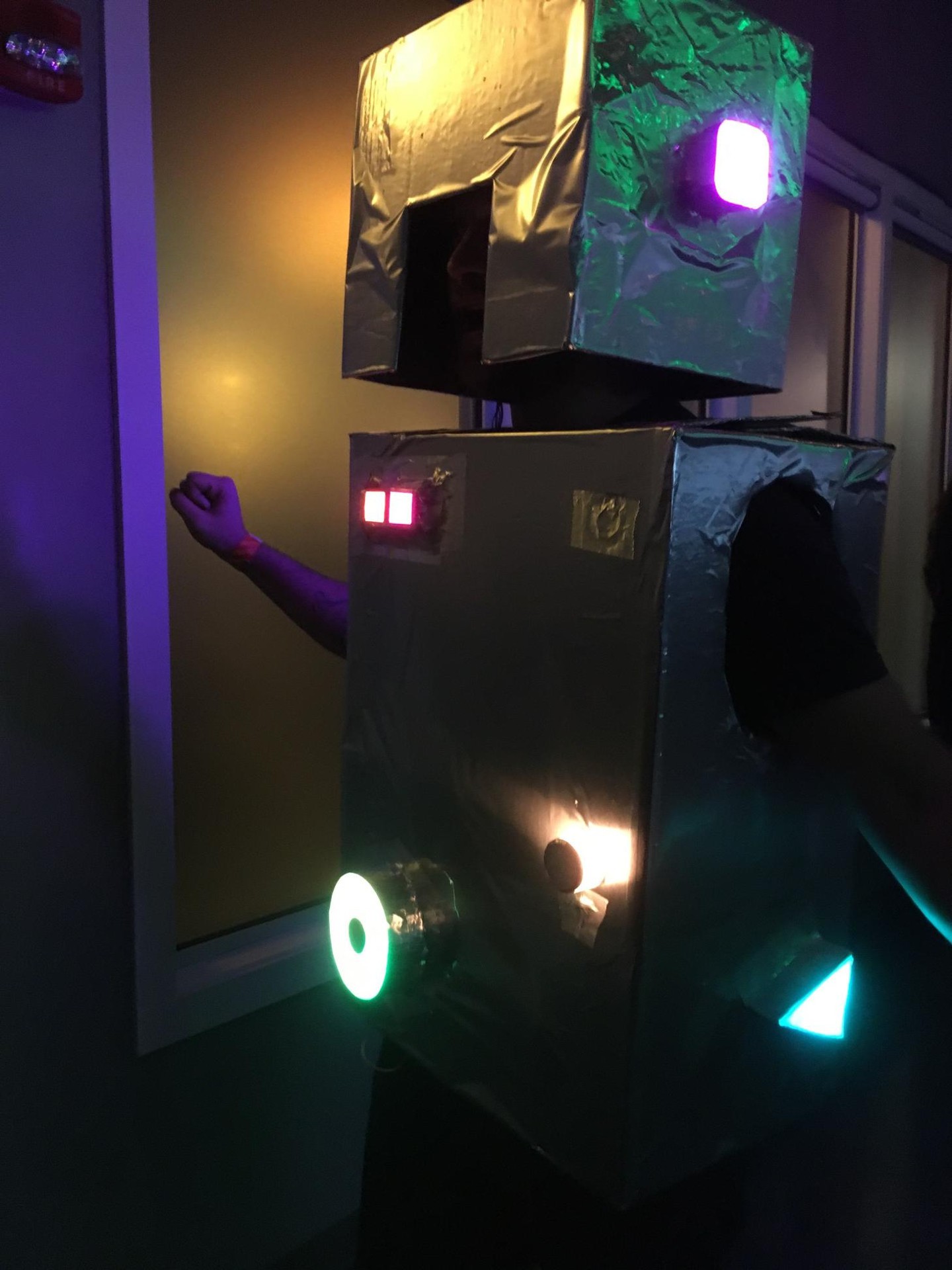
The costume's structure consists of a few cardboard boxes and reinforcing pieces, stitched together with zip ties, and covered in faux stainless steel contact paper (along with most of a roll of aluminum HVAC tape). The LEDs are driven using a Teensy 3.2, huge overkill since it pretty much just ran a demo rainbow program.
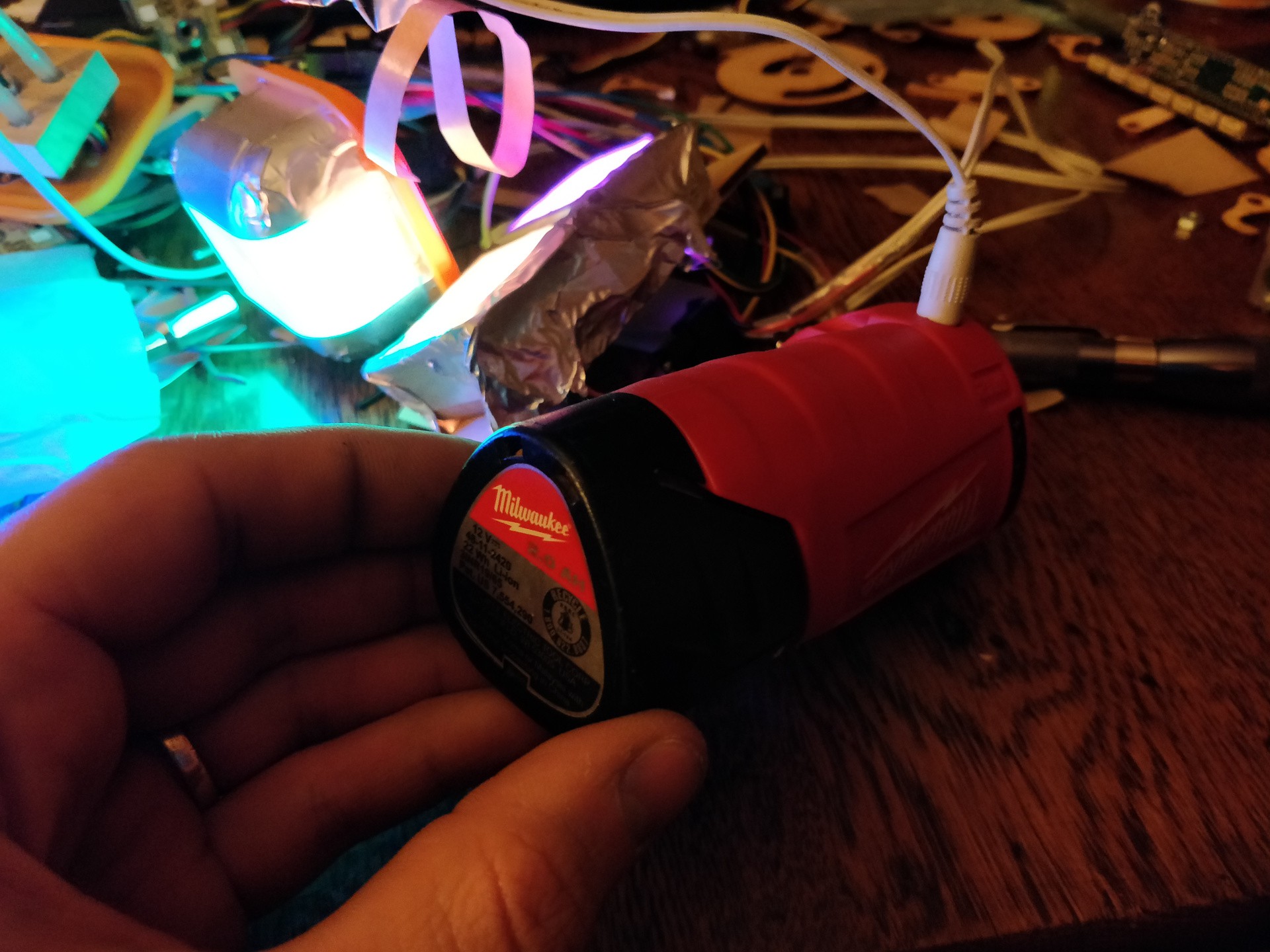
Power for the LEDs came from this terrific Milwaukee power supply. We have a few M12 tools, and this one came with Danica's heated jacket (#minnesotaproblems). It has a USB port that can supply 2.1 A for fast charging, but more importantly it also has a direct 12 V line output that is designed to power the jacket, so it can sink a lot of current.
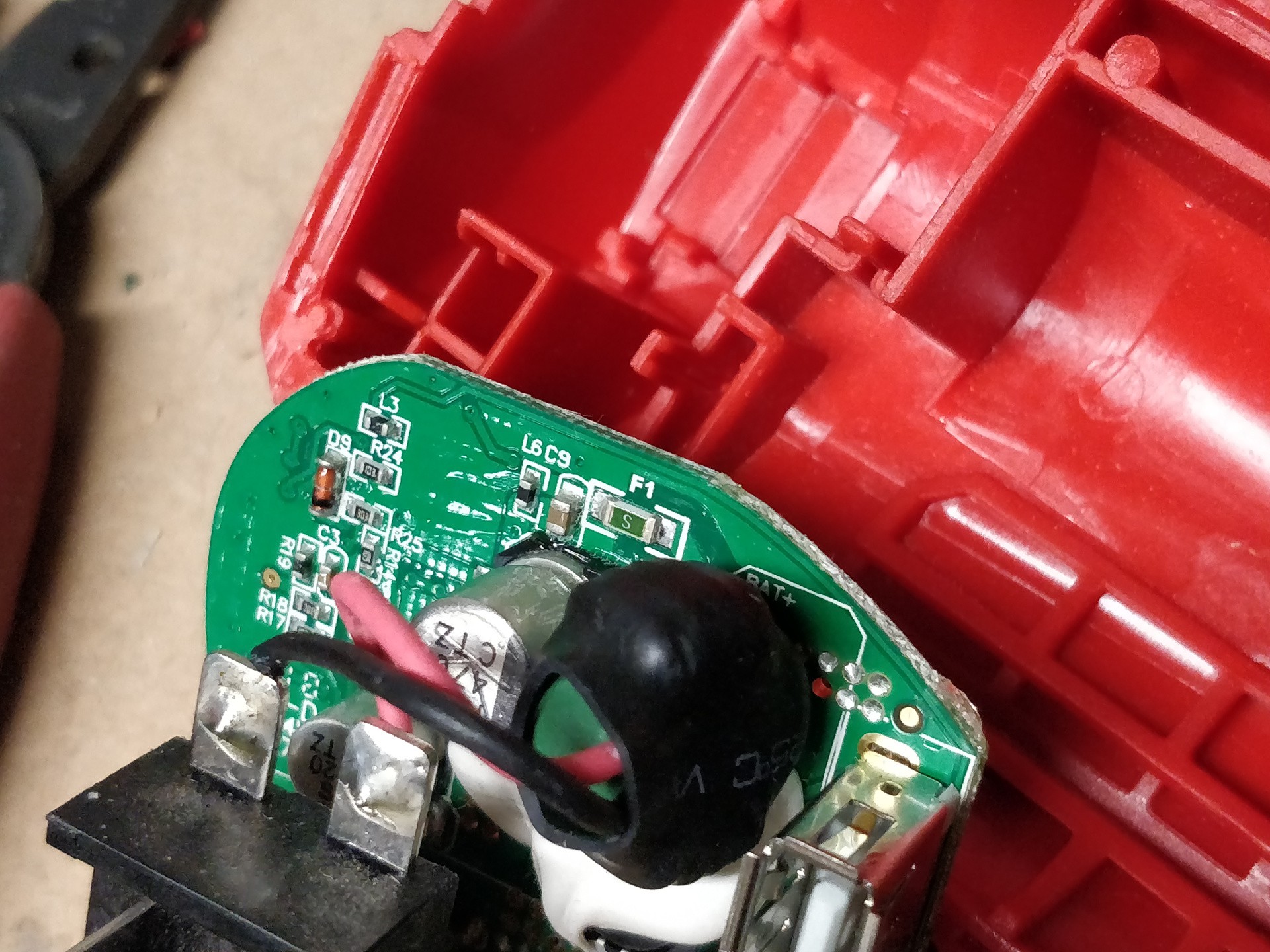
Battery stuff can be sketchy, so I ripped the power supply apart and verified that it had _some_ protection circuitry in the form of a polyfuse. I'm not sure the current limit, but it presumably guards against direct shorts. I'm not sure the packs themselves contain protection circuitry so this was an important safety consideration.
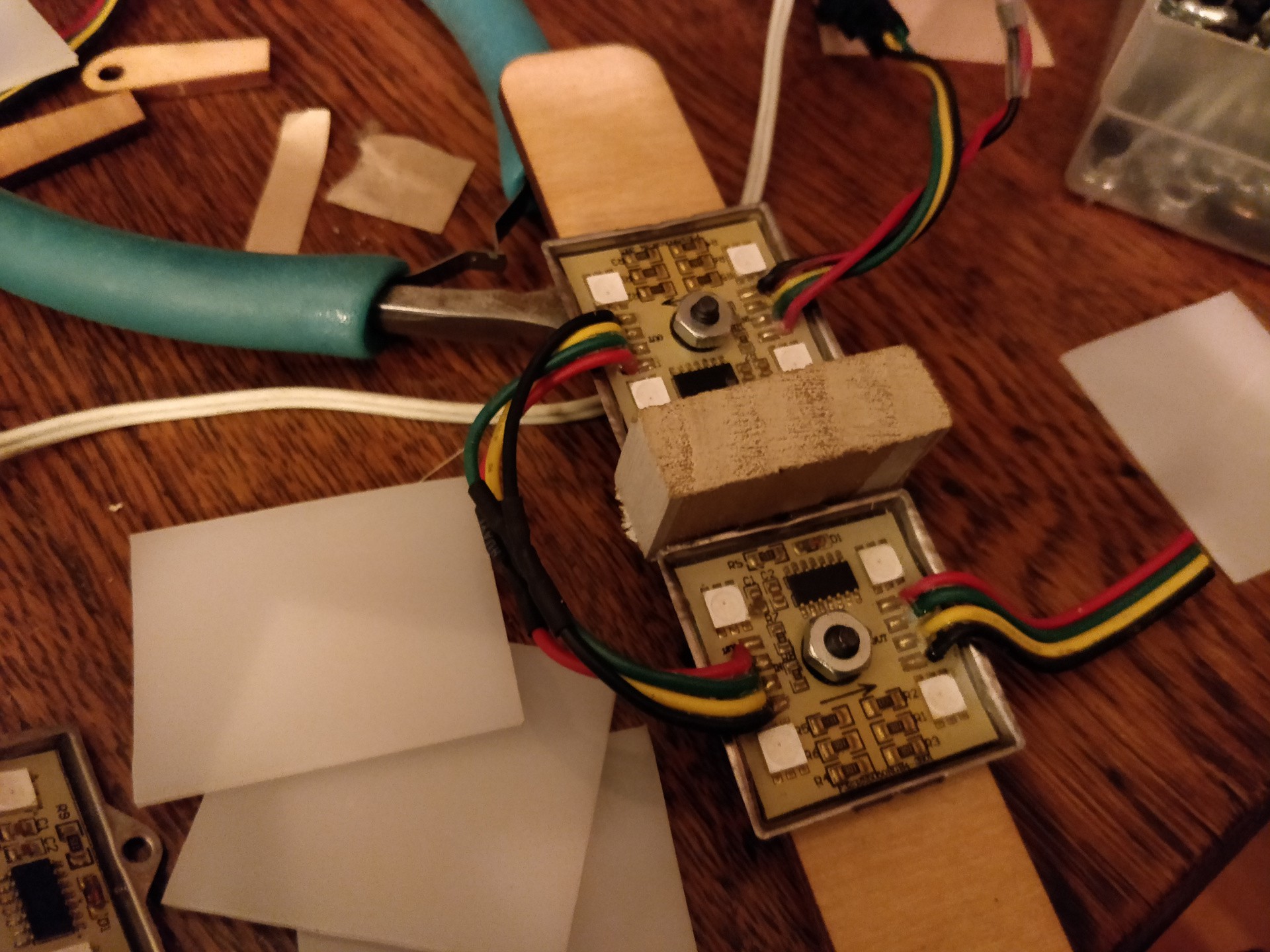
The costume uses most of a strand of Adafruit 36mm RGB pixels, each rated at 160 mA / 12 VDC. I used these pixels for several years as workbench lights in my basement (they had a sweet 'party mode' that filled the room with beautiful rainbow shadows), and they were due to be repurposed. As usual, Adafruit includes a ton of demo code that just works.
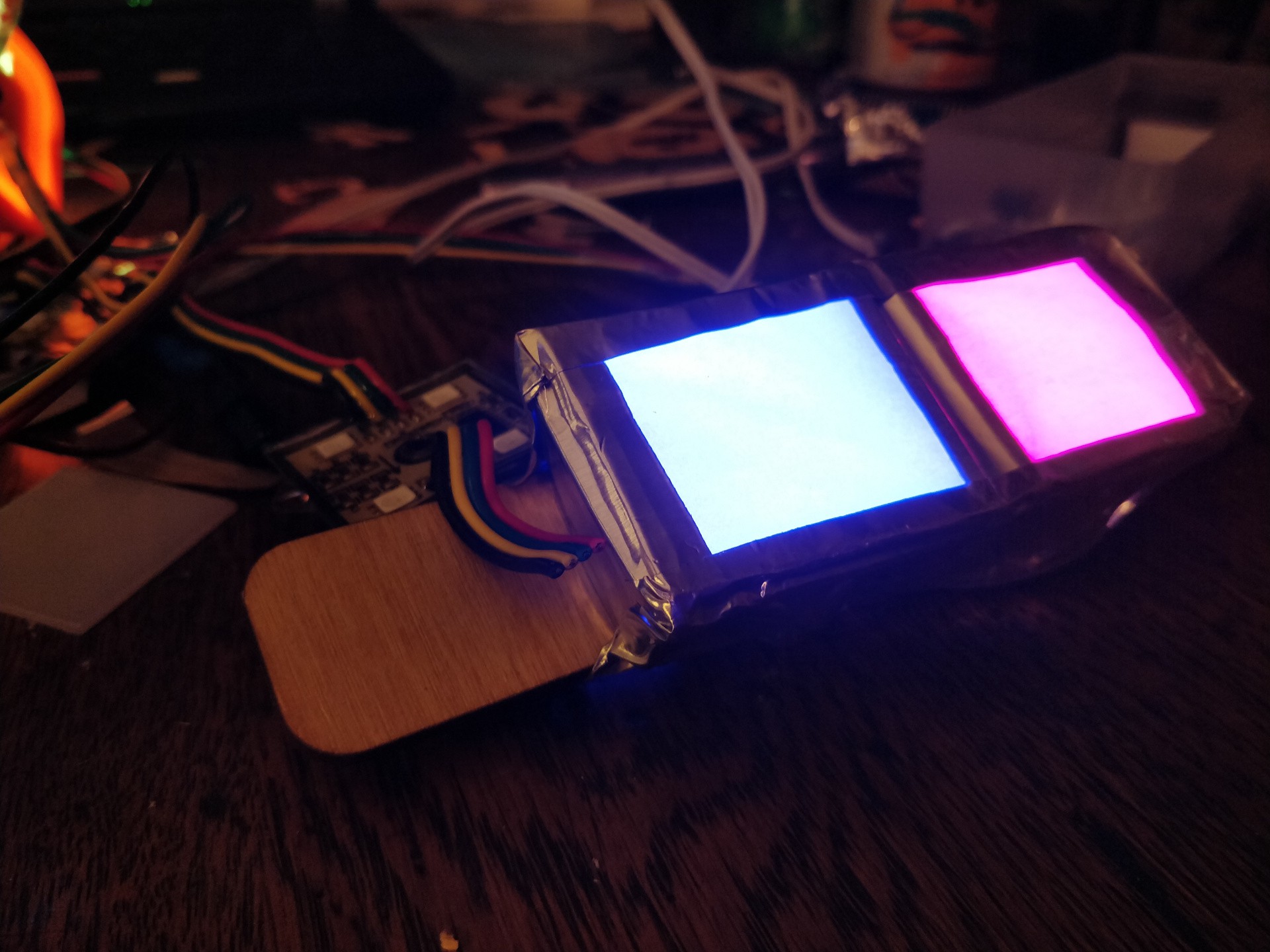
Other than the ears, all of the pixel groups were unique ad-hoc designs that used a few layers of vellum paired with a bit of 1/16" Delrin for diffusion. The high intensity from the pixels meant I could layer up a decent bit of film and still get a crazy amount of brightness.
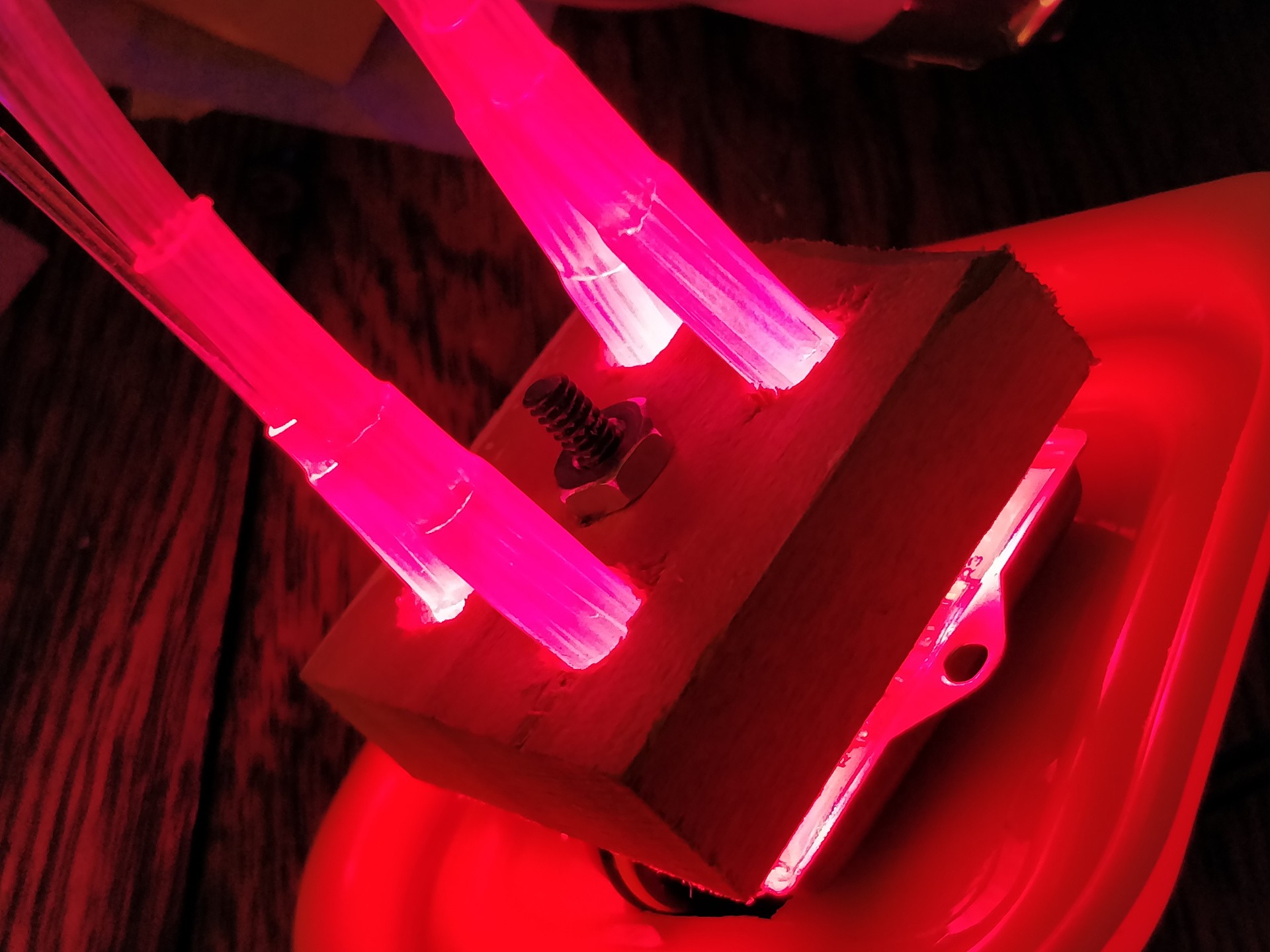
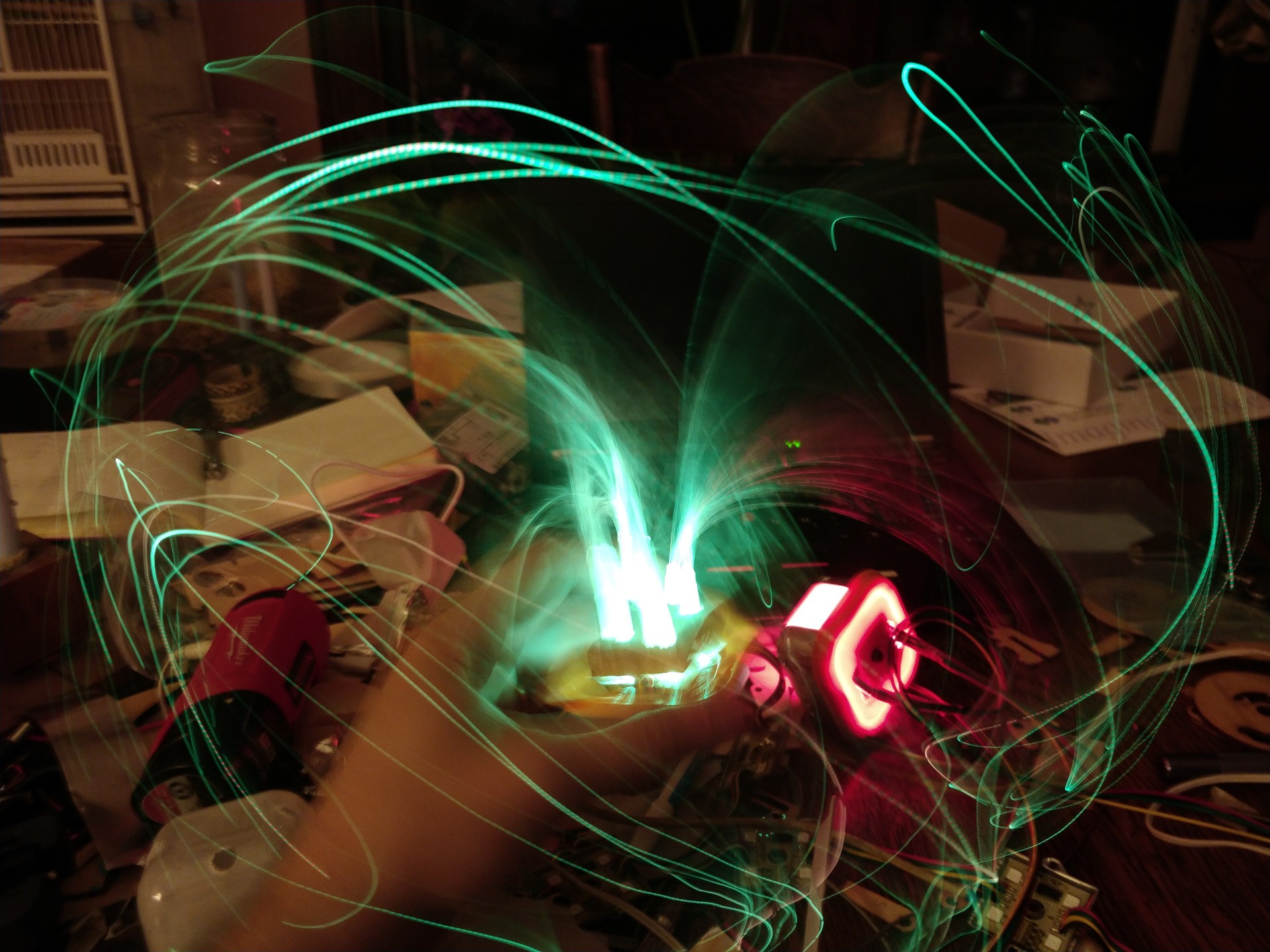
I keep a stash of plastic fiber optic strands around for emergency builds like this, and hoped to integrate a few dozen into the robot's head. The build got down to the wire so I didn't get a chance to use this part, but it did photograph nicely. I was able to swing the strands around fast enough that you can see the individual PWM pulses from the strands, which is pretty cool for a LED fading nerd like myself.
If you want to do something like this, or really have _any_ application that requires substantial power in a safe and portable form factor, the Milwaukee part is pretty keen. I suppose a USB-C power bank could serve the same purpose but that sounds difficult.
 zakqwy
zakqwy
Discussions
Become a Hackaday.io Member
Create an account to leave a comment. Already have an account? Log In.